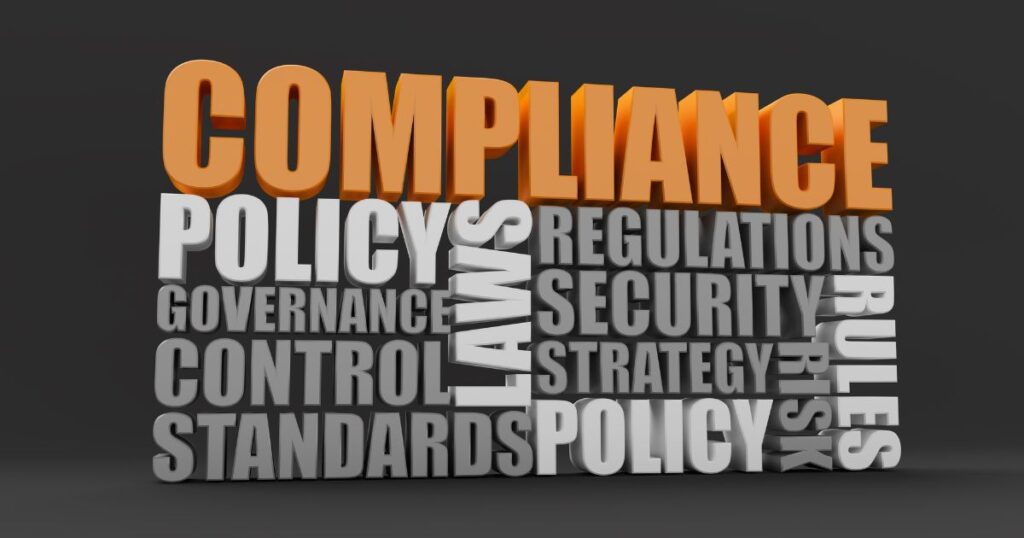Introduction to Industry-Specific Policies

Industry-specific policies form an essential set of instruments within the complex landscape of modern and developing economies alike, guiding economic growth, innovation, and sustainability. A swath of policies deals with peculiar features or issues and opportunities found within specific sectors, from energy and technology to healthcare and manufacturing. Such policy measures thus create an enabling environment, taking due consideration of each sector individually, with good competitive advantage, regulatory compliance, and economic resilience. At PolicyAnalyze, we step into a details-rich world of industry-specific policies: what they do to market dynamics, corporate behavior, and the well-being of society. As a think tank, we are committed to incisive analysis, evidence-based recommendations, and forward-looking solutions in support of informed decision-making. We seek to close the gap between policy and practice through rigorous research and interdisciplinary collaboration, thereby ensuring industry-specific regulations that not only cater to existing demands but also feel the changing winds of new trends. That interplay between public policy and industry performance is worth understanding at all levels for stakeholders: whether in the energy sector, trying to navigate the shift toward renewable sources; or in the technology sector, working out issues about data privacy; or health, tilting toward more cost-effective care—there are affirmative industry-specific policies in all these areas. According to Michael E. Porter in “The Competitive Advantage of Nations,” such policies, when tailored appropriately, can yield an enormous competitive advantage for the respective industries at the international level. Similarly, one also gets the impression from the work of Peter F. Drucker, “Innovation and Entrepreneurship,” of the key role which regulatory frameworks play in stimulating innovation in any given sector. PolicyAnalyze works tirelessly in the areas of such significant intersections to put it’s empower policymakers, industry leaders, and citizens through knowledge impetus to drive forward sustainable and inclusive growth. Our work derives inspiration from comprehensive studies like “The New Industrial State” by John Kenneth Galbraith, evidencing how the nature of industry-policy relations has changed in modern liberalized economies.
Policy implementation

Policy implementation is the means of translating political goals into practice. It is a highly critical process that requires a blend of political and technical expertise to secure successful outcomes. Effective policy implementation necessitates management of political support, resistance, and involvement of frontline services. All it requires is clarity of priority, effective communication, and robust mechanisms of feedback. Implementation Elements Leadership The leaders ensure new policies are aligned to existing legislation and policies to ensure smooth implementation. Objectives Clear objectives of what will be achieved direct action and measure success. Well-articulated objectives give a roadmap for implementation. Resources Any policy can’t be implemented successfully without a sufficiency of resources, budget, people, infrastructure, etc. Stakeholder Engaging stakeholders allows for the incorporation of varied perspectives for a given policy framework. It creates collaboration and maximizes the acceptance of the formulated policy. Communication Communication is open, clear, and continuous to manage expectations and intervene with the parties in case of any issue/concern. It helps to maintain support and minimize resistance. Feedback Loops Robust feedback loops can help in sighting any issues, pointing out strategies that need adjustment to win continually. There can never be an ideal or final phase for continuous improvement. Effective policy implementation is essential for realizing the translation of policy objectives into concrete actions. It should be holistic, with political, social, and organizational perspectives. Clear objectives, resource allocation, stakeholder involvement, and strong feedback mechanisms are conditions that increase the likelihood of satisfactory implementation for a particular policy. The challenges lying within this process will induce positive change, understood and worked on correspondingly, in an effort to realize desirable outcomes.
Introduction to Data Protection

Data protection is the term used to refer to a set of practices, regulations, and policies designed to protect personal information and sensitive data. Its essence in collection, storage, and communication involves due care in protecting the information from unauthorized access, misuse, or unnecessary disclosure. It addresses a set of measures that make sure data is ethically used, securely kept, and managed in an out-and-in formation governance manner. Considering the explosive growth of digital technology and the quantum of data generated every day, data protection has currently emerged as a salient factor in present-day governance, business, and personal privacy. Objectives of Data Protection ⦁ Ensuring Privacy: One of the prime objectives for data protection is to maintain a person’s right to privacy. This includes protection against unauthorized access to their private data, ensuring that persons control their information, and not allowing their identities to be used for other people’s selfish motives. There have been various landmark rulings in the U.S., through which a lot of emphasis has been laid on privacy. Judicial cases in the Supreme Court, such as Katz v. United States (1967), in which it was ruled that the Fourth Amendment does indeed safeguard a person’s private conversations against wiretapping by police without a warrant. ⦁ Protection from Breach: Data security tends to provide safety measures from any breach of data leading to loss, theft, or unauthorized access to information. This includes providing for strong encryption, access controls, and periodic security assessments to ensure identifying and mitigating all vulnerabilities. The 2014 case of Riley v. California underscores securing the data; the Supreme Court ruled that before searching a cell phone, the police need a warrant due to the huge amount of Personal Data it holds. ⦁ Compliance with Legal Frameworks: Compliance with several laws on data protection that stipulate what is expected of organizations’ handling of personal data is very tough. For instance, in Europe, there is the GDPR, while in Canada, there is the Personal Information Protection and Electronic Documents Act (PIPEDA). In the U.S., there is the CCPA, establishing substantial standards over data protection. Compliance is very important in avoiding legal implications and also avoiding the loss of public trust. Another point that illustrates the necessity of compliance in regard to the law on handling data is explained by the Supreme Court case of Carpenter v. United States, 2018, in which the Court held that the government needs a warrant in gaining access to historical cell phone records giving a detailed chronicle of a person’s past movements. ⦁ Building of Trust: Through the application of sound data protection practices, organizations can build trust and continue to enhance it with their customers, partners, and the public. Any organization must sustain trust, as it serves as the basis of any relationship, if not of all; stakeholders should feel satisfied that their information is managed appropriately. United States v. Jones, 2012, further strengthened the principle that unauthorized collection of data—like GPS tracking without a warrant—amounts to something that one would not trust and which violates the law. ⦁ Data Integrity: Data protection also deals with the accuracy and reliability of the data. This would include provisions to prevent loss of data or data corruption and other unauthorized modifications and to ensure that data is updated and relevant. Case law, including Whalen v. Roe, 1977, has recognized the need for integrity in respect of personal information kept by the government. ⦁ Enabling Data Portability: This involves assurance that data subjects can transfer data easily from the service of one provider to that of another, which aids in increasing competition and innovation since every person will be able to shift to other services without loss of data. ⦁ Accountability: Improved general accountability on the part of organizations with regard to their data protection practices, for instance, through documentation of handling procedures, regular auditing, and transparency in terms of collection, use, and storage. For example, in Spokeo, Inc. v. Robins, 2016, the Supreme Court wrestled with questions of standing and harm in actions alleging inaccurate treatment of personal data. ⦁ Risk Mitigation: Data protection helps identify and mitigate risks associated with the handling of personal data, testing for any threats, developing preventive measures, and laying down response plans in the case of a data breach or other security incidents. The 2011 Sorrell v. IMS Health Inc. case was an important topic on using data and possibly misusing it—hence, the need for a strong mechanism of data protection to mitigate such risks. In this respect, PolicyAnalyze.com is very much committed to data protection, wherein the prime goal is that personal and sensitive information be dealt with in a responsible, ethical, and safe manner.
What is Policy Analysis?

Policy analysis is a systematic approach applied toward the evaluation and development of public policy. It covers reviewing the design, implementation process, and results of the policies with a view to providing evidence-based insight to the decision-making process for creating effective and efficient solutions to social problems. This way, it takes care that public resources are widely used and policies achieve the desired objectives.Leslie Pal defines policy analysis as the disciplined application of intellect to public problems.Pal writes:“This definition is similar to Dunn’s: ‘policy analysis is a process of multidisciplinary inquiry designed to create, critically assess, and communicate information that is useful in understanding and improving policies’ (Dunn, 2008, p. 1).”Pal elaborates, noting that policy analysis is a cognitive activity—a thinking game, if you will—focusing on public policy outputs in terms of their problem definition, goals, and instruments. The Five Parts of Policy AnalysisA thorough policy analysis typically comprises five essential parts:⦁ Problem DefinitionClearly identifying and articulating the policy issue that needs to be addressed. This involves understanding the scope, causes, and implications of the problem.⦁ Policy AlternativesGenerating and describing a range of possible solutions to the problem. Each alternative should be feasible and capable of addressing the identified issue.⦁ Evaluation CriteriaEstablishing criteria to assess the effectiveness, efficiency, equity, and feasibility of each policy alternative. Common criteria include cost, benefits, social impact, and political feasibility.⦁ Policy RecommendationBased on the evaluation of alternatives, providing a well-supported recommendation for the best course of action. This recommendation should align with the evaluation criteria and offer the most effective solution to the problem.⦁ Implementation StrategyOutlining a detailed plan for how the recommended policy will be put into practice. This includes identifying necessary resources, timelines, and key stakeholders involved in the implementation process. What are the Methods of Policy Analysis?These Key methods include:⦁ Cost-Benefit Analysis (CBA)This method involves comparing the costs and benefits of different policy alternatives to determine which option provides the greatest net benefit to society.⦁ Cost-Effectiveness Analysis (CEA)Similar to CBA, but focuses on comparing the relative costs and outcomes of different interventions to identify the most cost-effective solution.⦁ Qualitative AnalysisThis approach involves using qualitative data, such as interviews, case studies, and expert opinions, to understand the potential impacts and feasibility of policy options.⦁ Quantitative AnalysisEmploying statistical and mathematical models to analyze data and predict the outcomes of different policy scenarios.⦁ Risk AnalysisAssessing the potential risks and uncertainties associated with policy options to inform decision-making under conditions of uncertainty.⦁ Stakeholder AnalysisIdentifying and evaluating the interests and influence of various stakeholders affected by the policy to ensure that their perspectives are considered. In summary, policy analysis is a crucial tool for developing and evaluating public policies. By employing various methods, such as cost-benefit analysis, qualitative and quantitative analysis, and stakeholder analysis, researchers can provide comprehensive insights into policy options. The five parts of policy analysis—problem definition, policy alternatives, evaluation criteria, policy recommendation, and implementation strategy—form a structured approach to ensuring that policies are effective, efficient, and equitable. Through meticulous analysis and evidence-based recommendations, policy analysis helps create sustainable solutions to complex societal challenges. ReferencesPal, L. (2014). Beyond Policy Analysis: Public Issue Management in Turbulent Times (5th ed.). Nelson Education.

